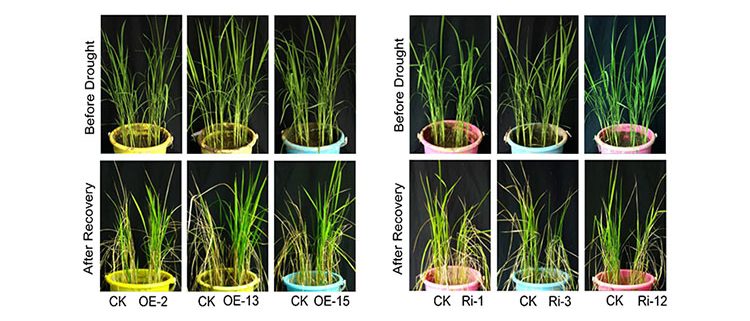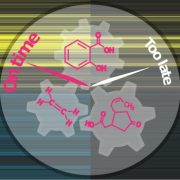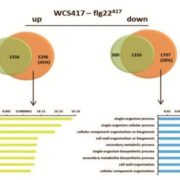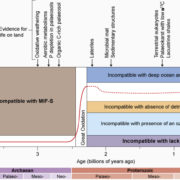Newly Discovered Abscisic Acid Transporter in Rice
Yao et al. found that OsPM1 can move the plant hormone abscisic acid into rice cells. https://doi.org/10.1105/tpc.17.00770.
By Lingya Yao and Xiaochun Ge
Background: Abscisic acid (ABA) is an important plant hormone that regulates plant seed dormancy and stress responses, especially drought responses. ABA is a weak acid that exists in two forms, the anionic form (ABA–) and the protonated (ABAH) form. ABAH can diffuse through membranes freely whereas the ABA– form cannot. Under drought stress, due to the alkalization of the extracellular space, most of the ABAH is deprotonated into ABA– and cannot diffuse into membrane. In this case, the hormone relies on transporters to move into cells. Rice is widely grown worldwide but is not tolerant to drought stress. Understanding how the ABA signal is transduced between plant cells is critical for improving drought tolerance in rice. To date, no authentic ABA transporter has been reported in rice.
Question: We noticed that the rice membrane protein OsPM1 (for Oryza sativa Plasma Membrane Protein 1) showed a pattern of accumulation similar to that of ABA in different tissues, and was highly responsive to ABA. We were therefore curious about its physiological role and wanted to unveil its relationship with ABA.
Findings: We found that overexpression of OsPM1 in rice enhanced its drought tolerance, as the leaf stomata closed more quickly thereby avoiding excessive water loss under drought. The ABA level in plants with more OsPM1 protein was also increased when exogenous ABA was applied on rice. Disruption of OsPM1 function caused the opposite phenotypes in rice. We also found that OsPM1 exists as a multimer at the plasma membrane. Using a transport activity assay, we showed that OsPM1 facilitates ABA uptake into cells, and the physiologically active isomer is the preferred substrate. Finally, we found that a transcription factor known to be important in regulating the rice drought response, OsbZIP46, binds to the promoter region of OsPM1 and regulates its expression.
Next steps: We want to know the quaternary structure (the exact number and arrangement of multiple folded protein subunits in a multi-subunit complex) of OsPM1 in the membrane. This will help us to understand how it works as a transporter.
Lingya Yao, Xuan Cheng, Zongying Gu, Wei Huang, Shou Li, Lingbo Wang, Yong-Fei Wang, Ping Xu, Hong Ma, Xiaochun Ge. (2018). An AWPM-19 family protein OsPM1 mediates abscisic acid influx and drought response in rice. Plant Cell https://doi.org/10.1105/tpc.17.00770.










